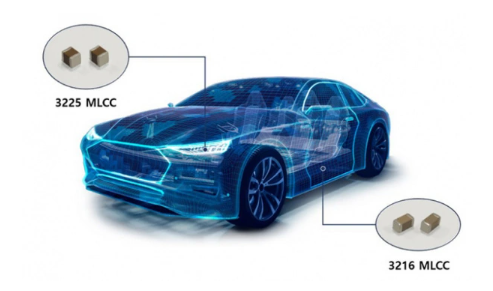Home >Technology peripherals >It Industry >As demand for electric vehicles surges, Samsung Electro-Mechanics develops the largest capacity MLCC applicable
News on May 17, Samsung Electro-Mechanics announced a major breakthrough and successfully developed the world's largest capacity multilayer ceramic capacitor (MLCC) for use in electric vehicles. This move is to strengthen Samsung Electronics' product portfolio in the high-end electronics market and accelerate its development in the automotive electronics market.
MLCC is an important component that can stabilize the current in a circuit and is widely used in smartphones, personal computers, home appliances, 5G devices and Internet of Things devices. The demand for MLCCs in the automotive field has increased dramatically with the application of a variety of advanced technologies.

According to ITBEAR Technology Information, a car requires at least 3,000 to 10,000 MLCC components for powertrain, safety accessories, driving-related equipment and infotainment systems etc. Therefore, it is of great significance to develop MLCCs suitable for electric vehicles.
The MLCC developed by Samsung Electro-Mechanics is specially designed for electric vehicle parts. Its capacitance is 33nF (125 degrees Celsius) at 250V voltage and 10µF (125 degrees Celsius) at 100V voltage. As a result, this MLCC is capable of handling the industry's highest capacitance at the same voltage.
This technological breakthrough from Samsung Electro-Mechanics will further promote the development of the electric vehicle market. As sales of electric vehicles grow rapidly, the trend for high-performance electronic components is also rapidly emerging. Samsung Electronics leverages its advanced technology and innovation capabilities to provide new solutions in the field of automotive electronics, helping the electric vehicle industry move to a higher level.
The above is the detailed content of As demand for electric vehicles surges, Samsung Electro-Mechanics develops the largest capacity MLCC applicable. For more information, please follow other related articles on the PHP Chinese website!